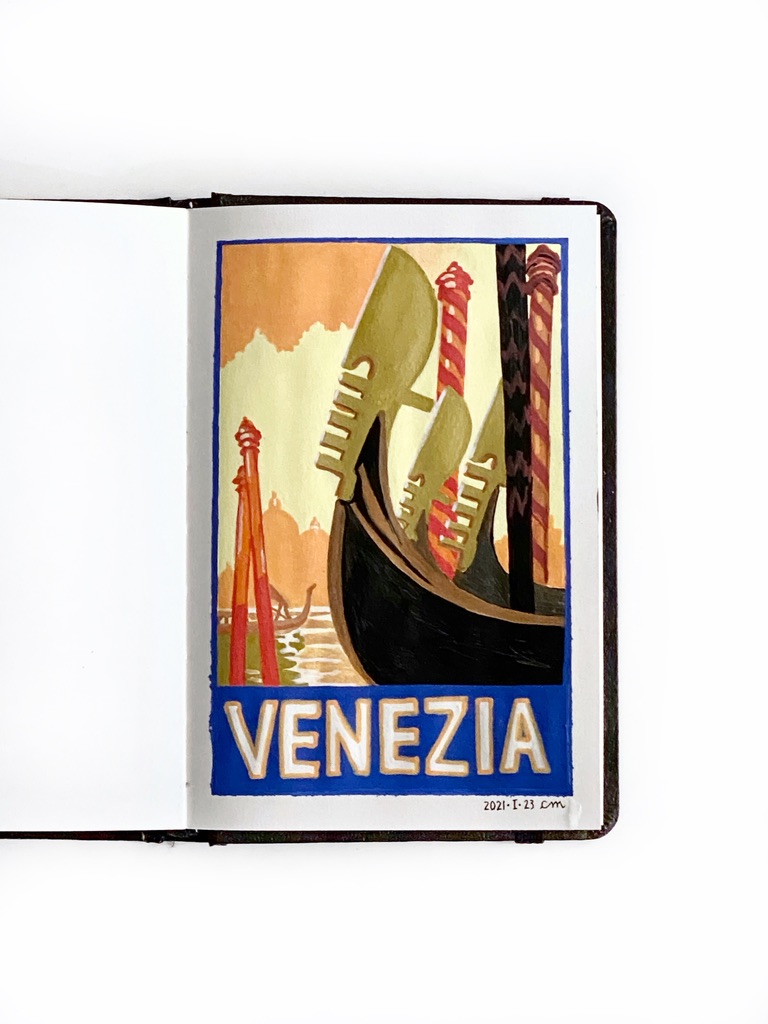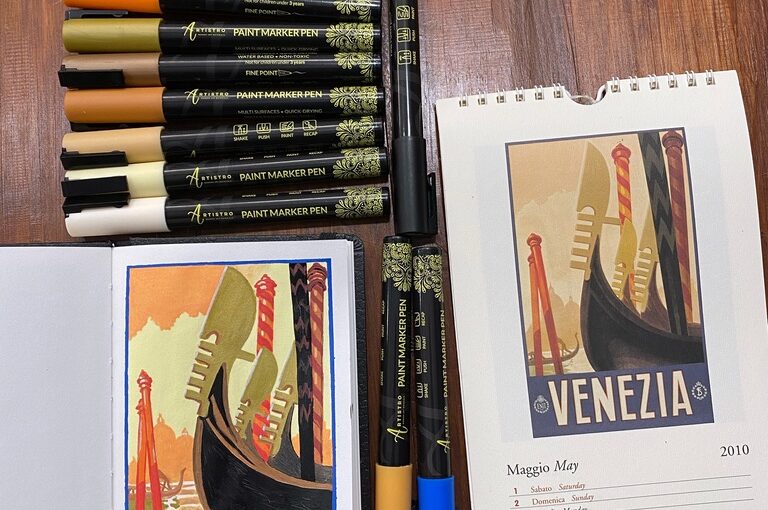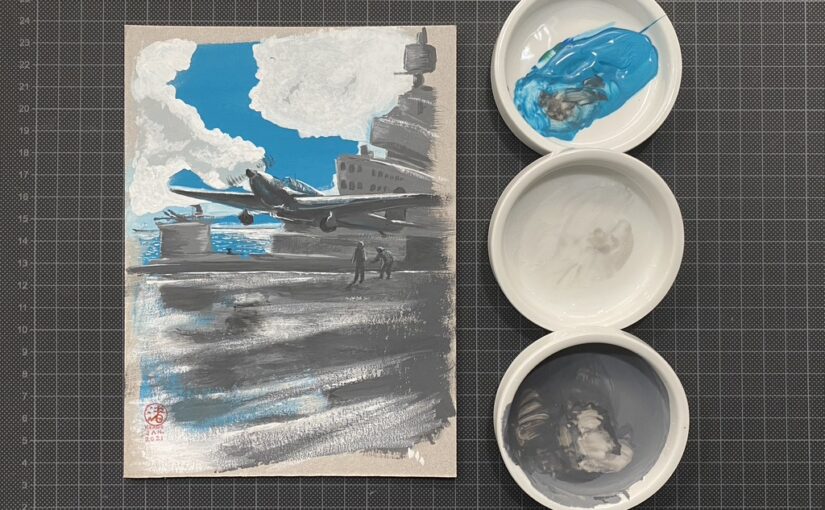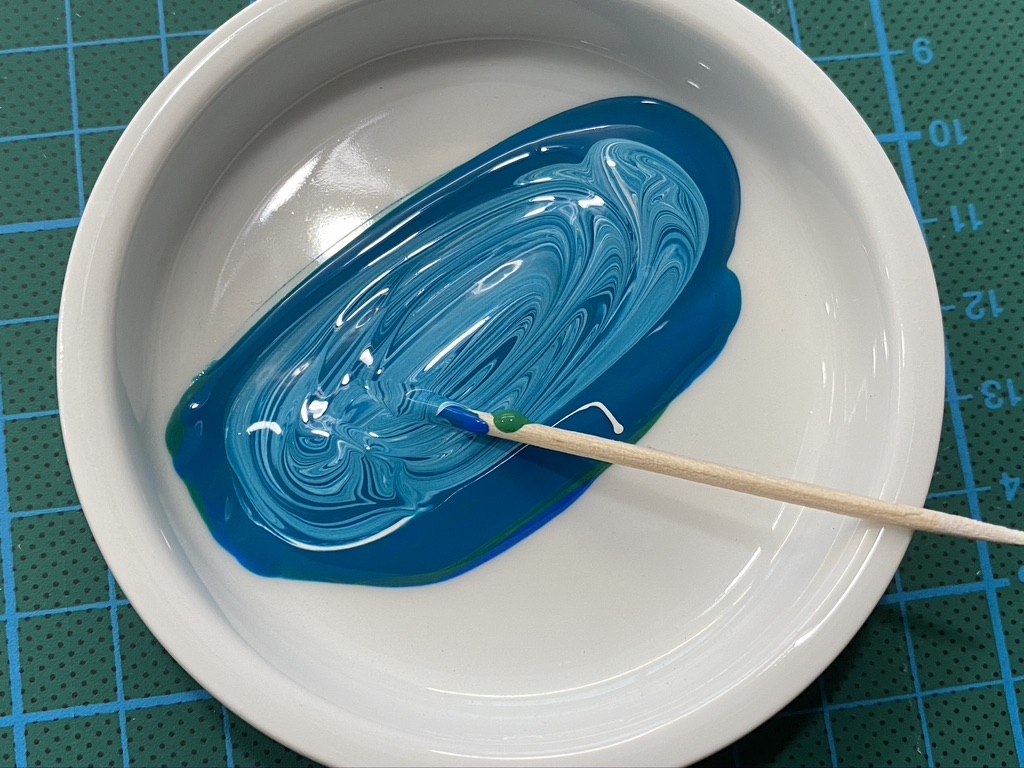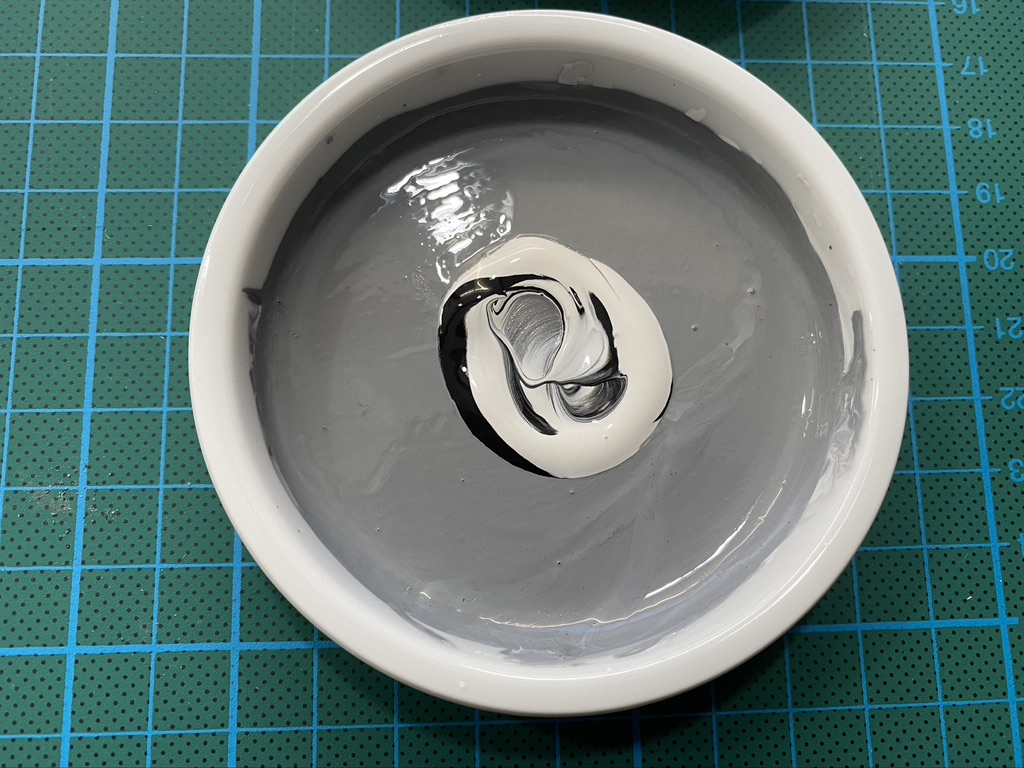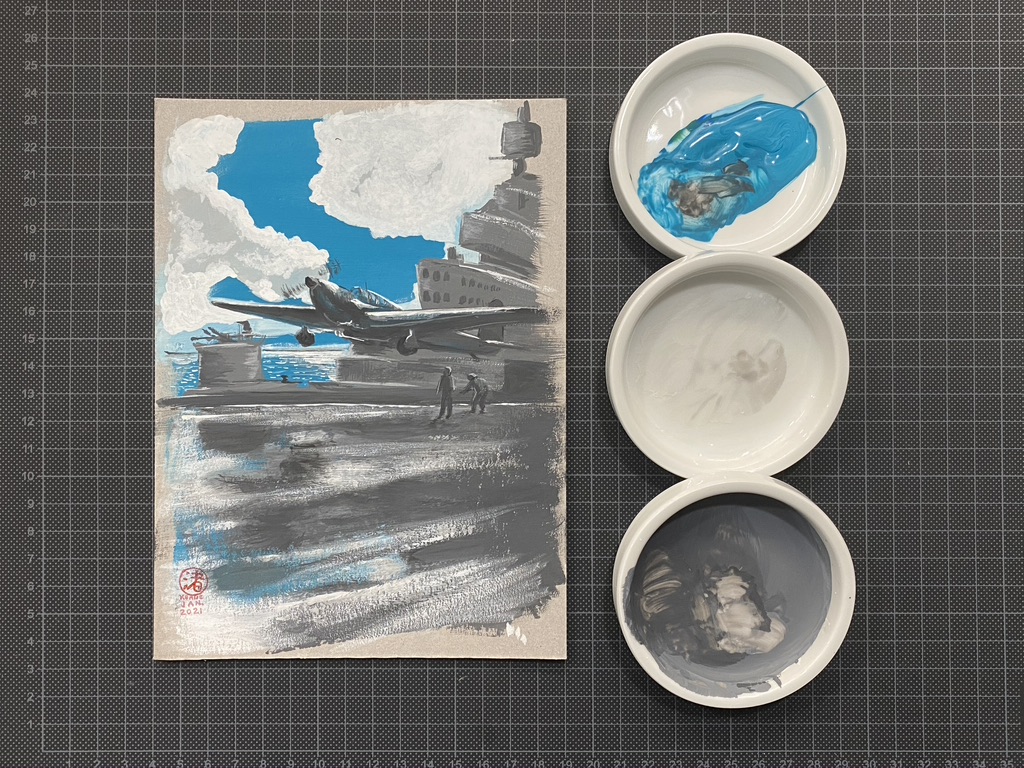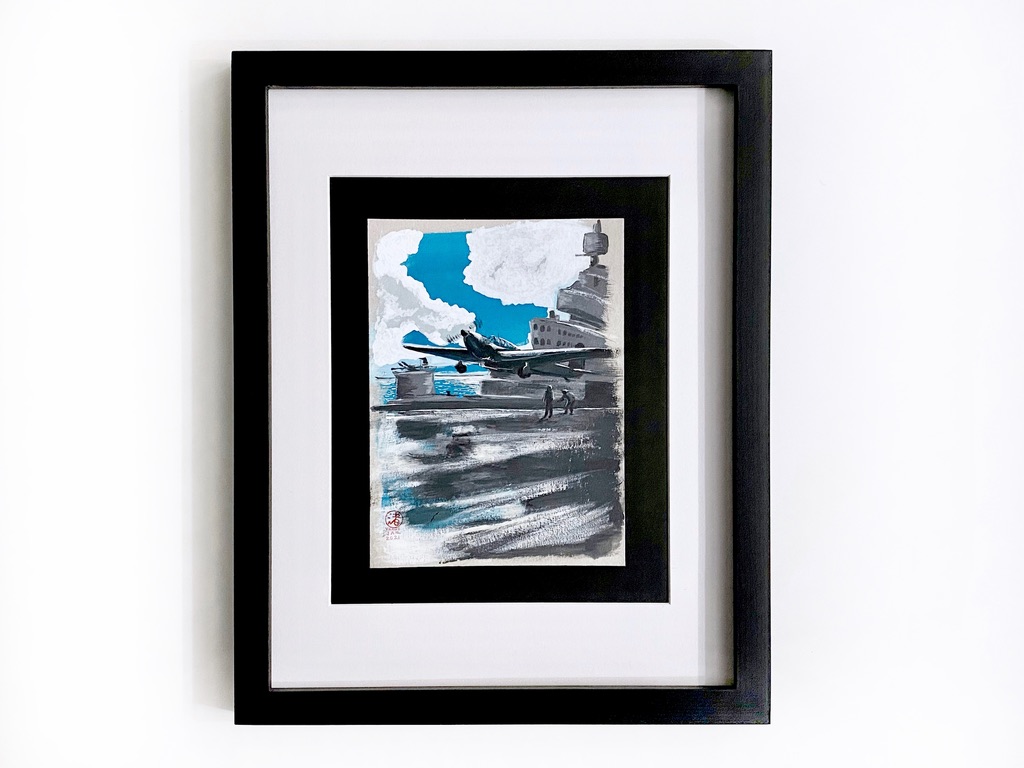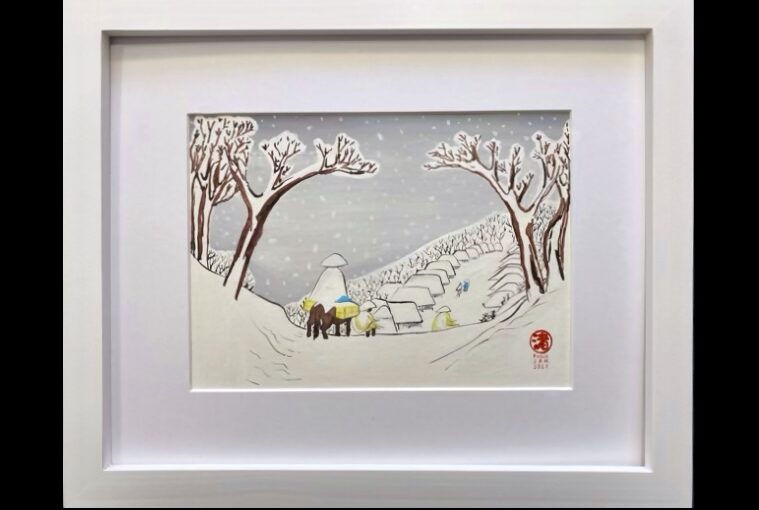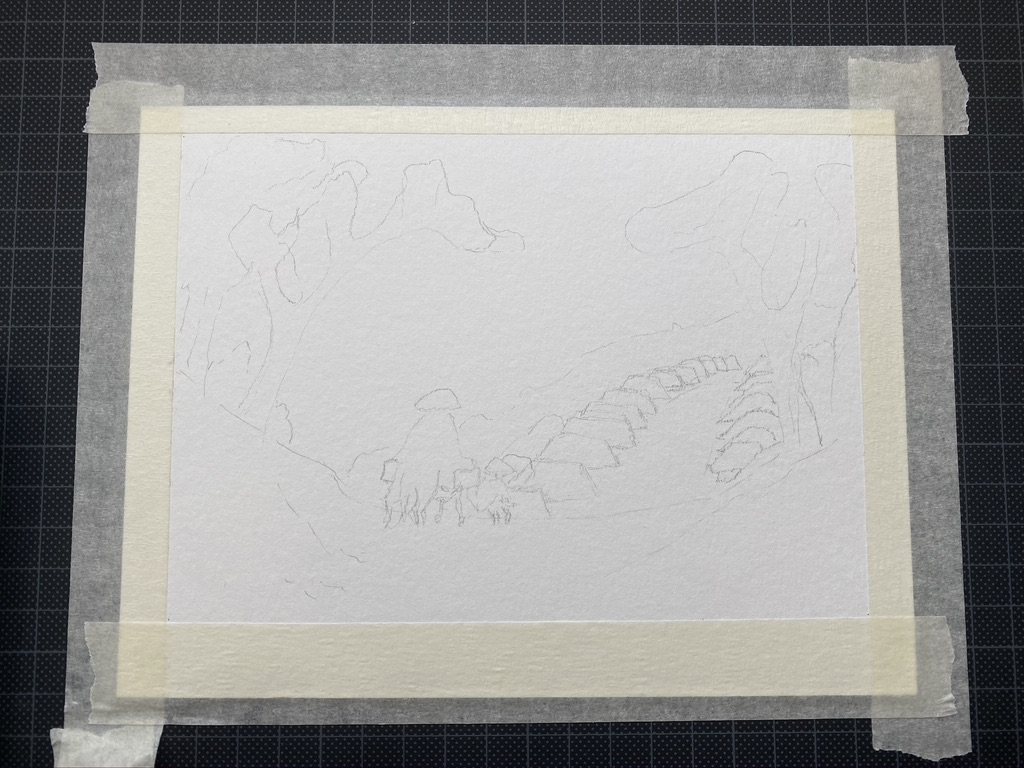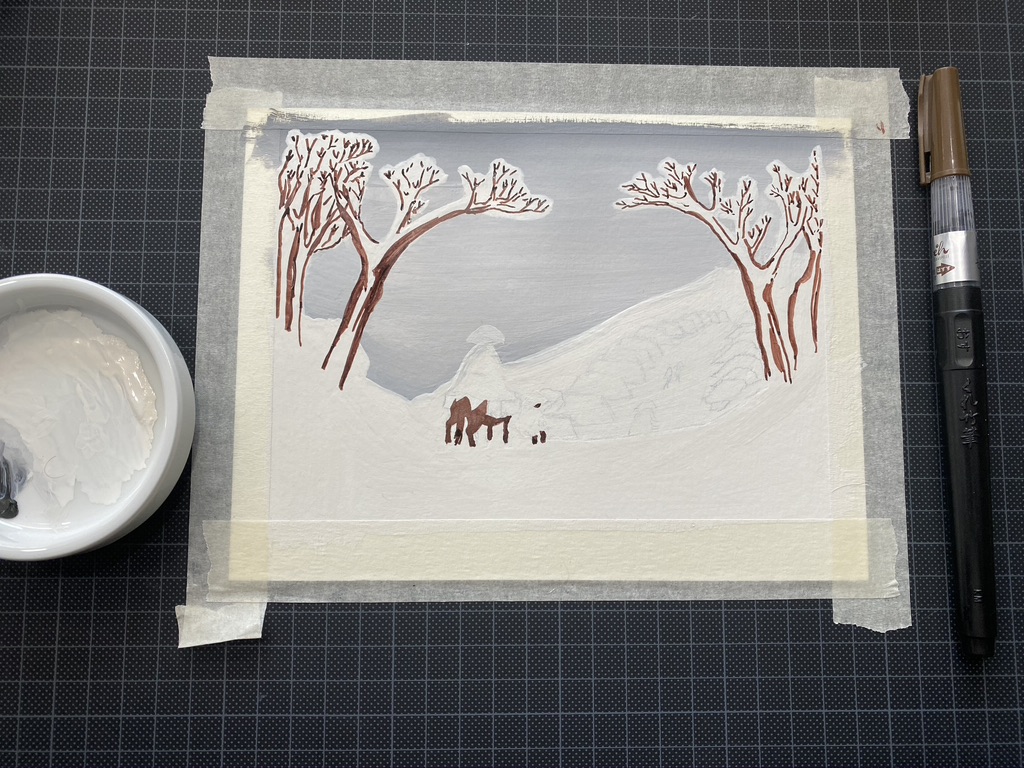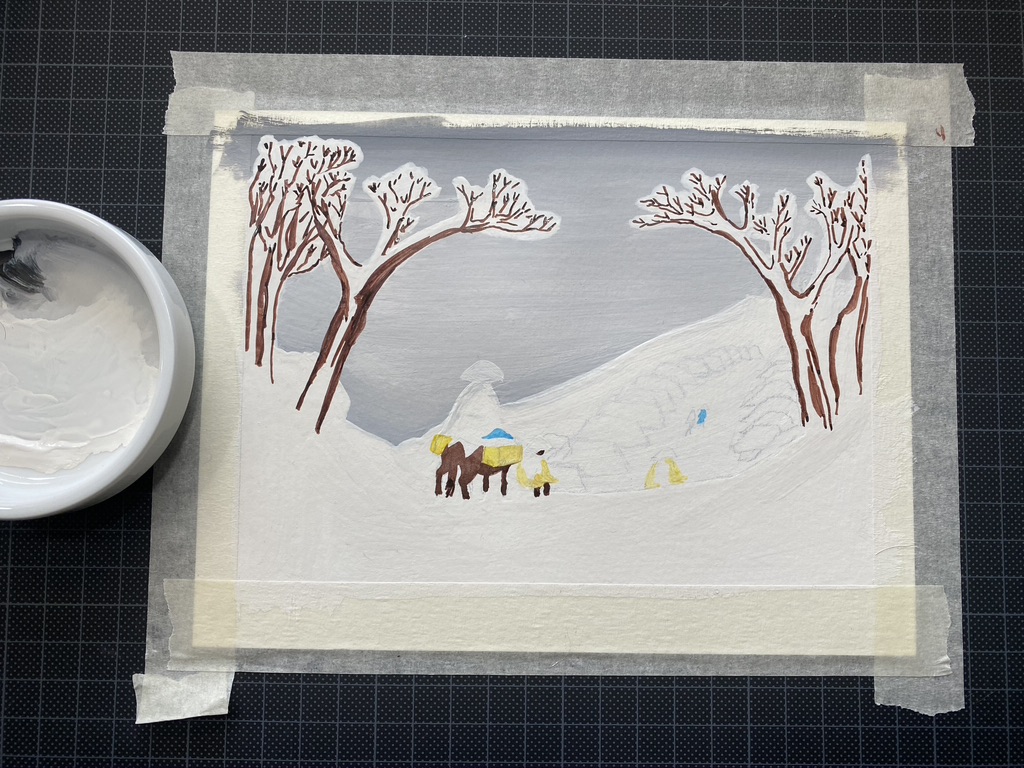The subject is an advertisement poster for Venice that I found in the 2010 calendar I got in Venice in 2009, and which I kept because the illustrations are pretty.
Canson artbook, 10,2 x 15,2 cm (4 x 6 in), 96 g/m2 (65 lb). It took me 3 hours, although it felt much quicker.
The paper is almost too thin for this medium (the paper warped), and a bit too small for this level of detail. I’m using a set of 30 acrylic paint markers from Artistro that have a fine tip that is 1 millimeter wide. At this scale, one millimeter is pretty thick. I find that thinner lines can be achieved in swift strokes, but that is at the cost of precision (in my case).
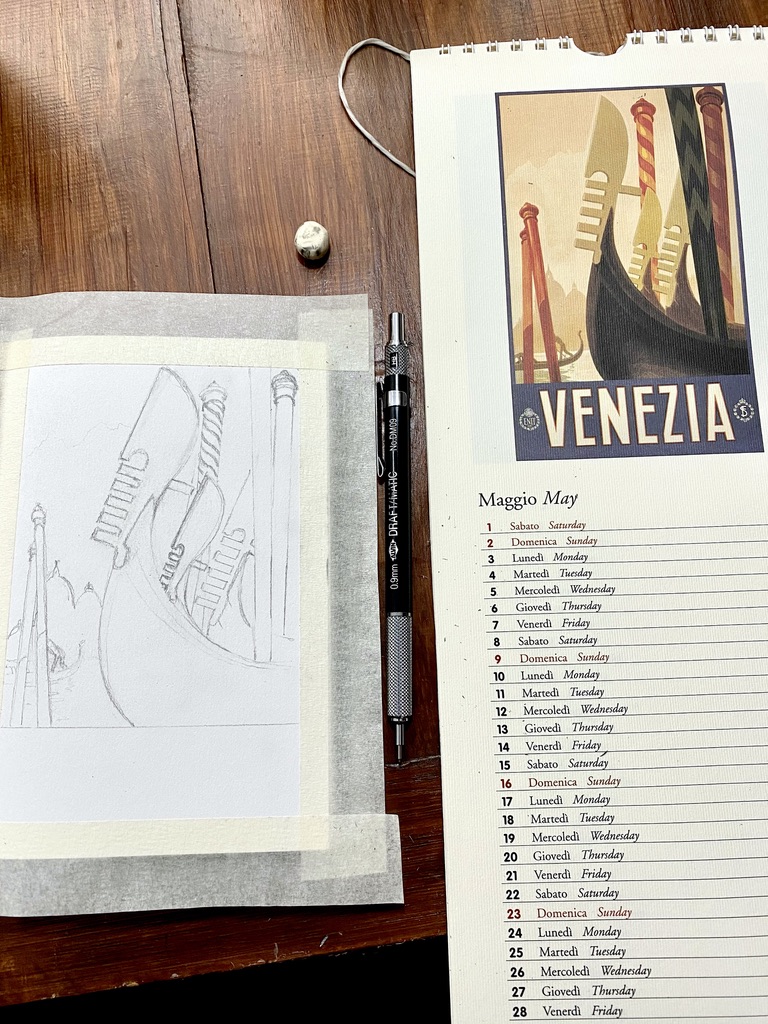
Pencil sketch that will be covered by the acrylic paint.
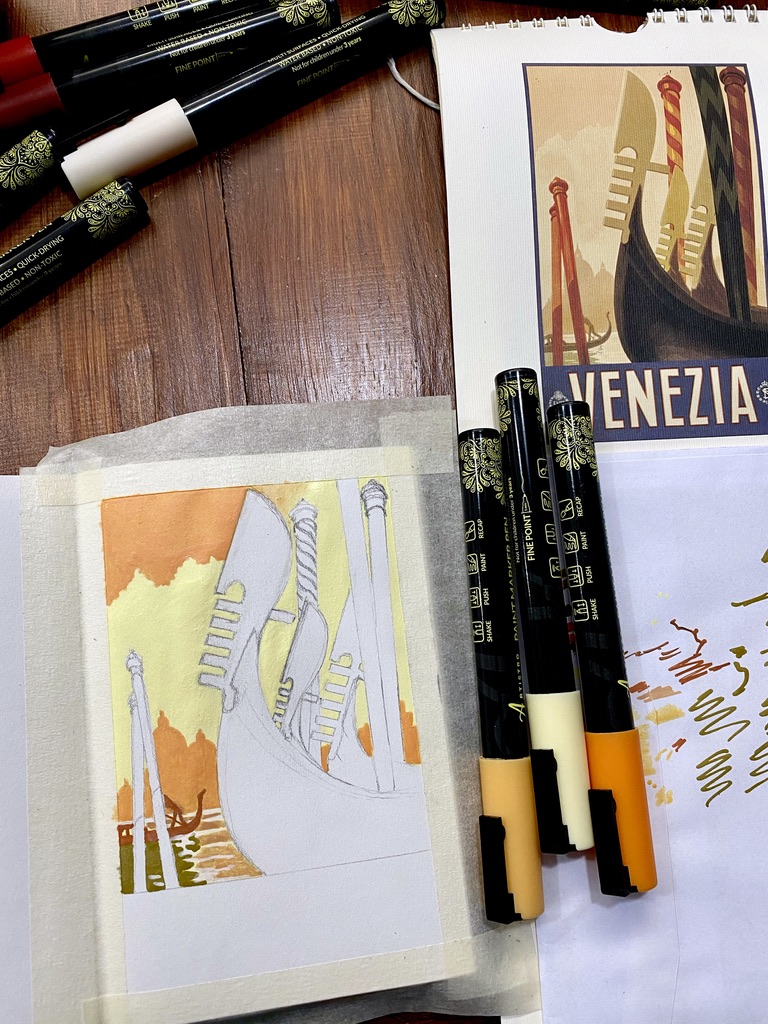
I do not have the exact same colours as the reference image. I’m trying out the pens I have on the back of an envelope.
I found colours that I think will work well together.
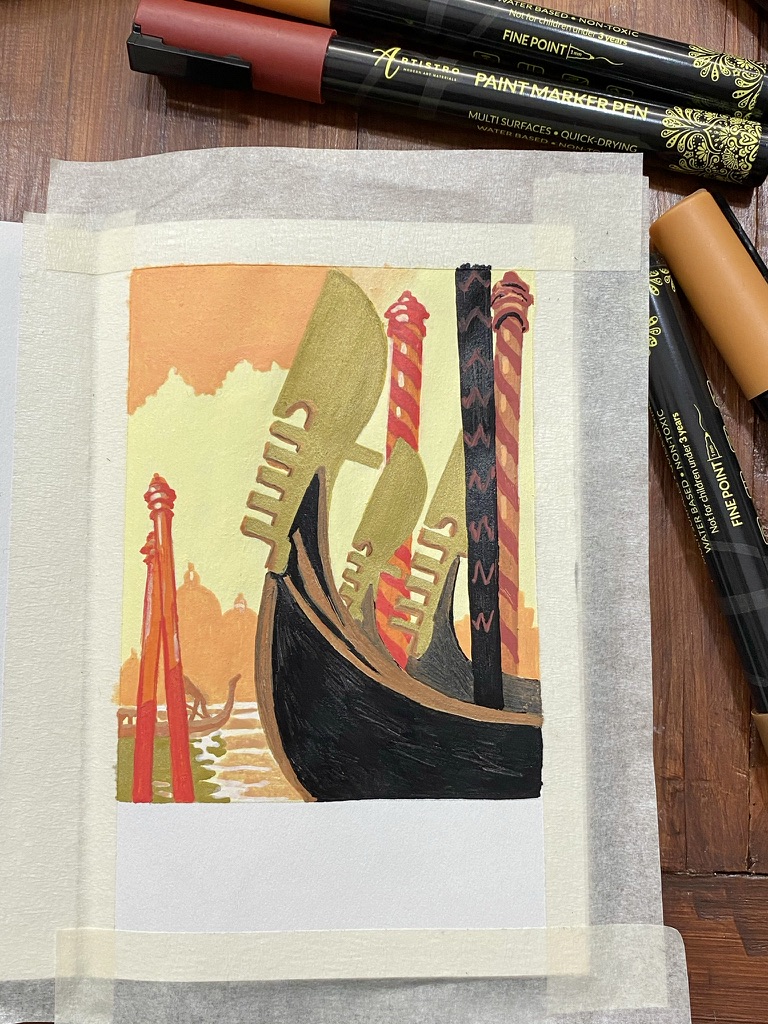
Close-up of the main drawing nearly done now that the gondolas and mooring posts are coloured.
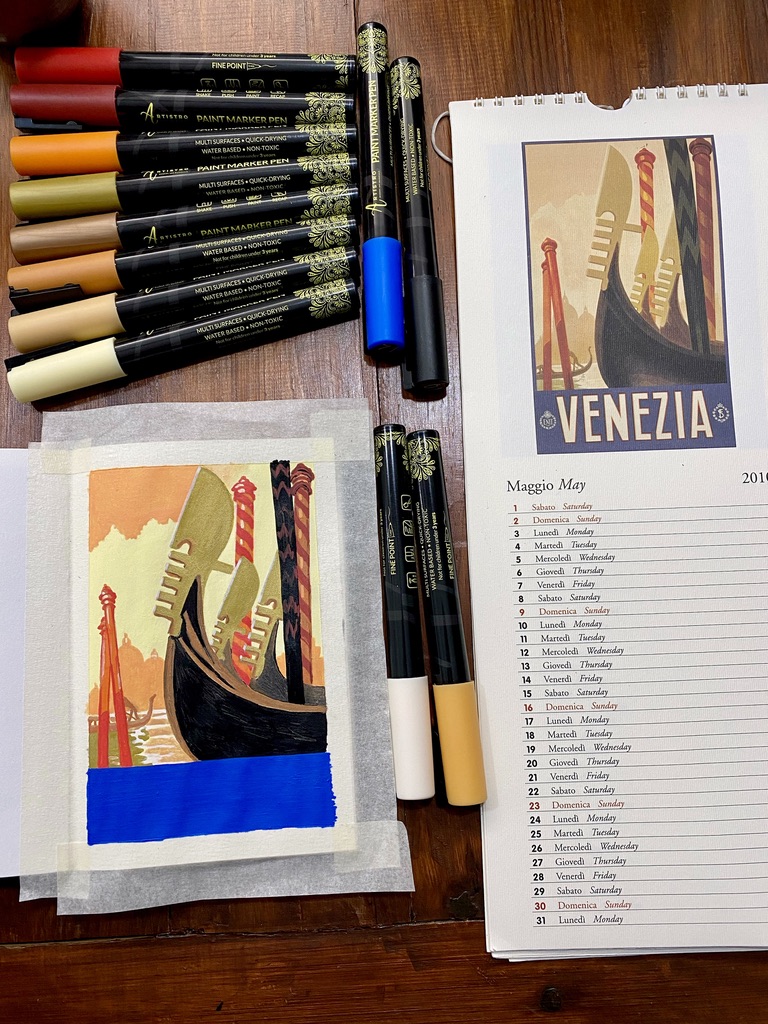
Almost done! All I need to add is “Venezia” in block letters at the bottom, and remove the masking tape.
